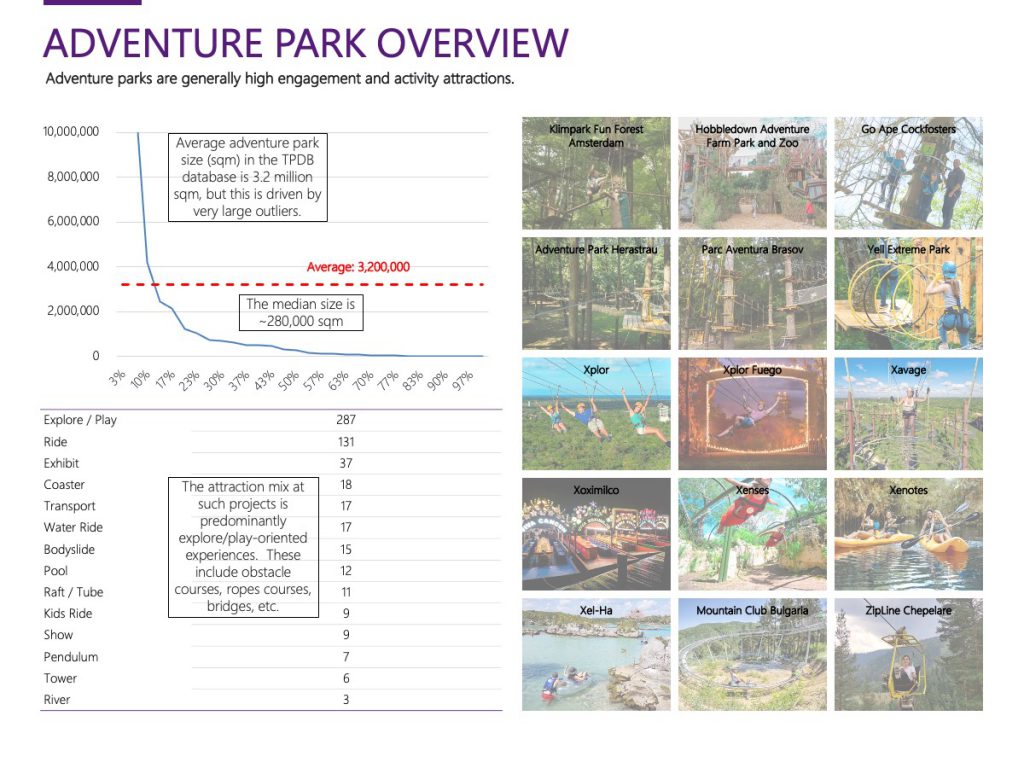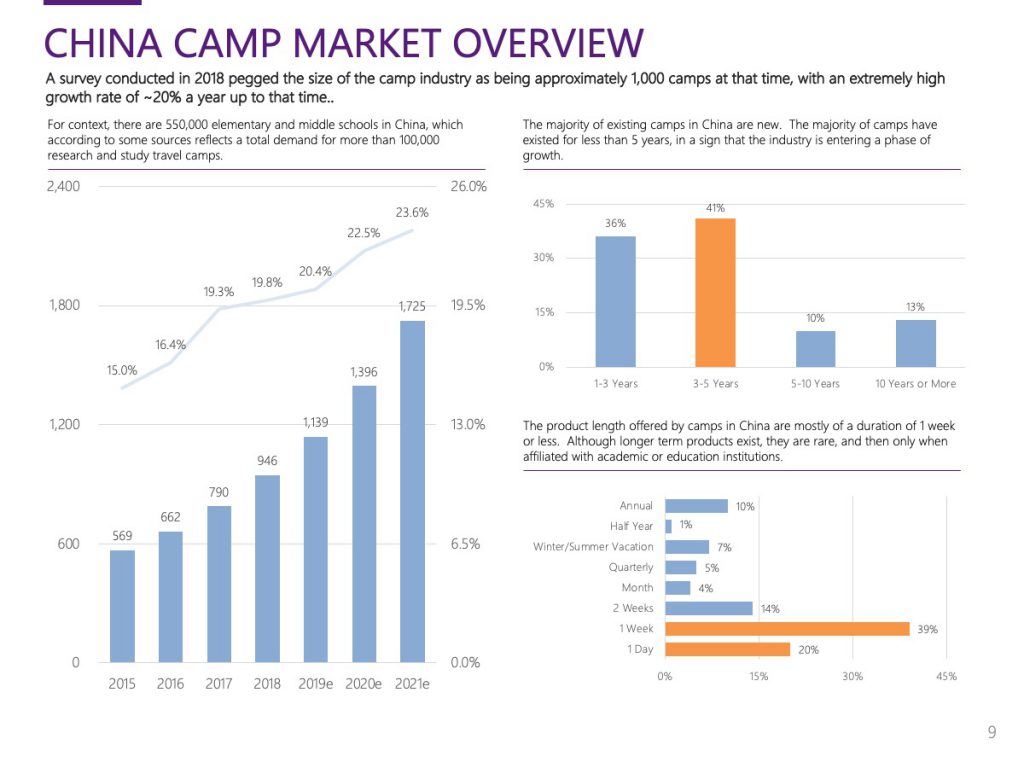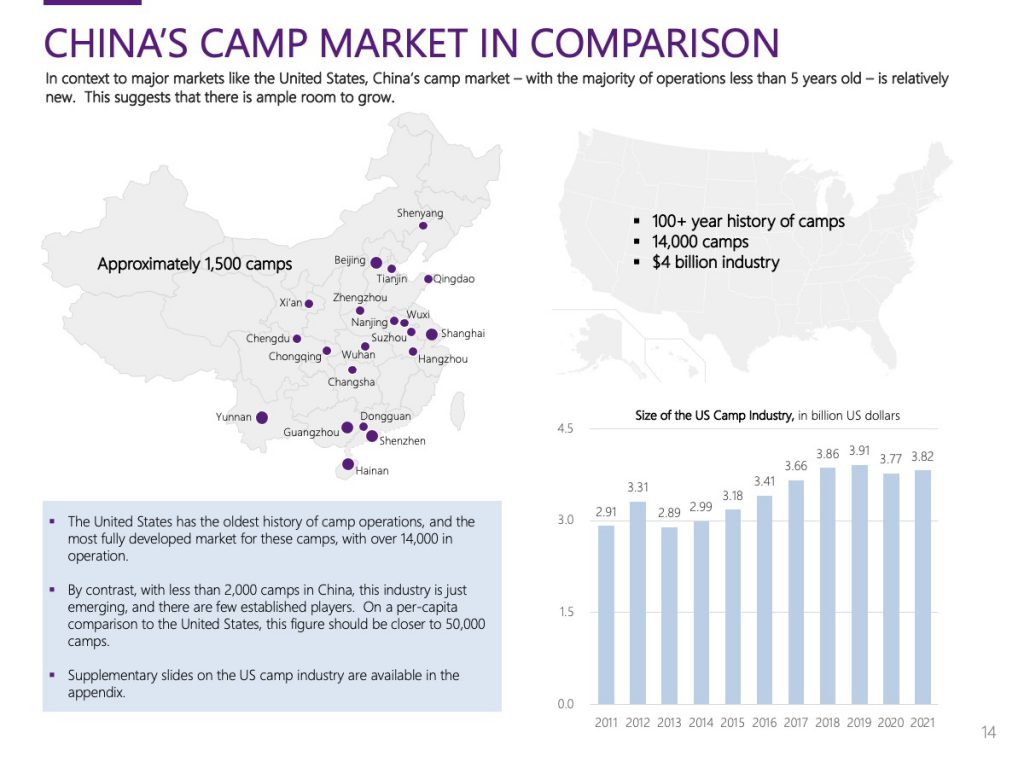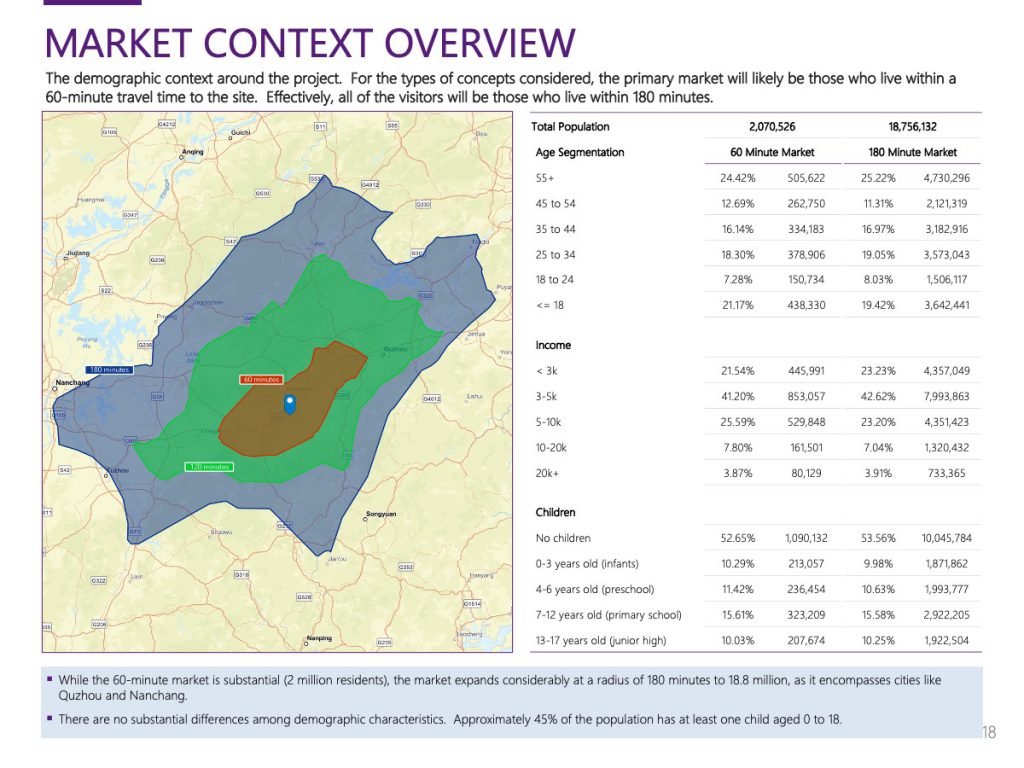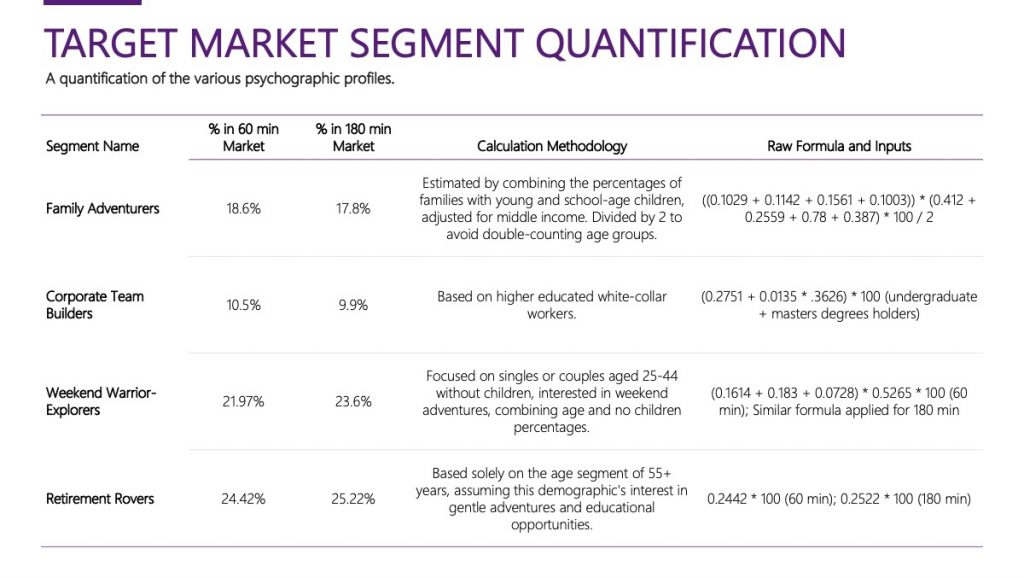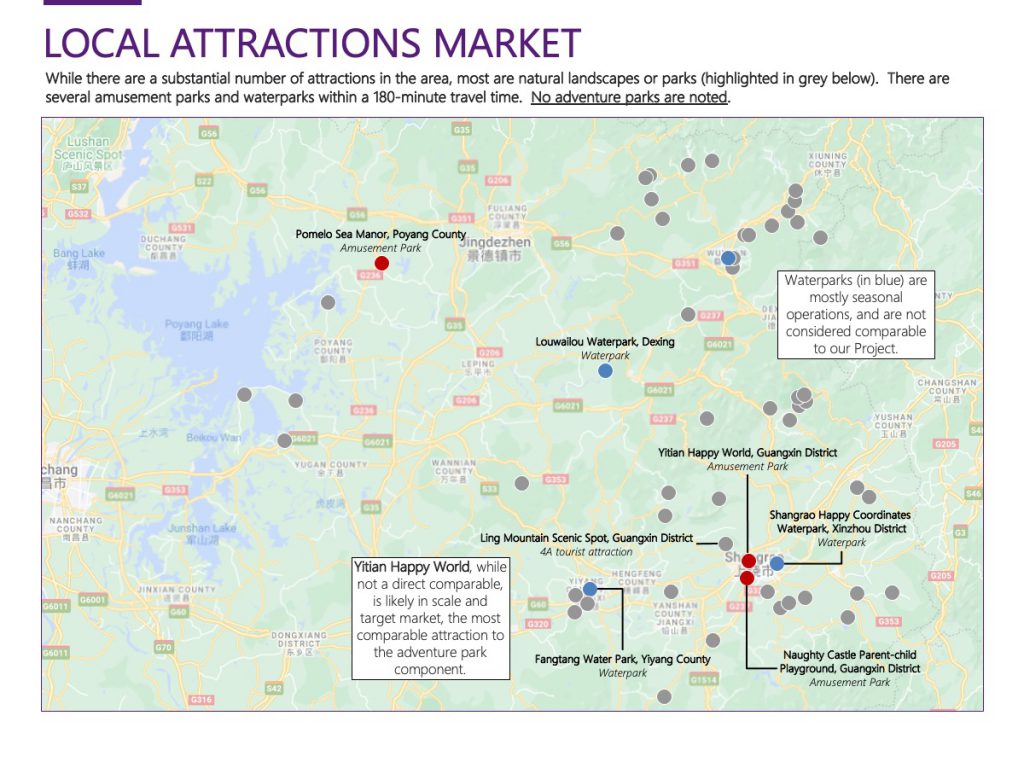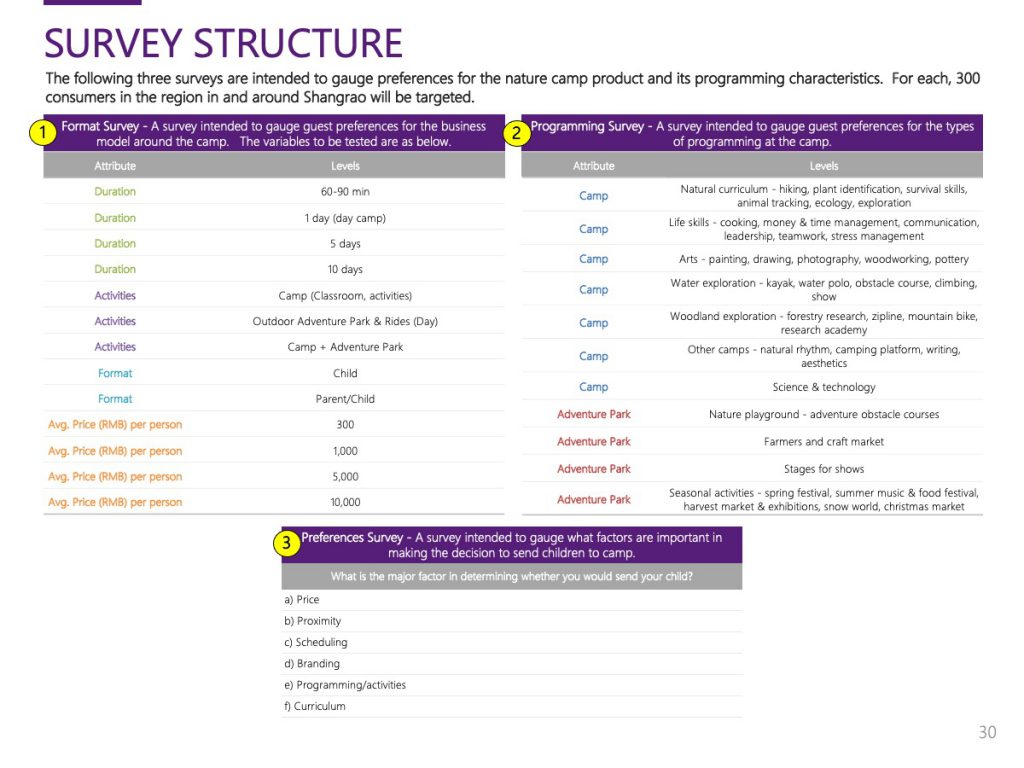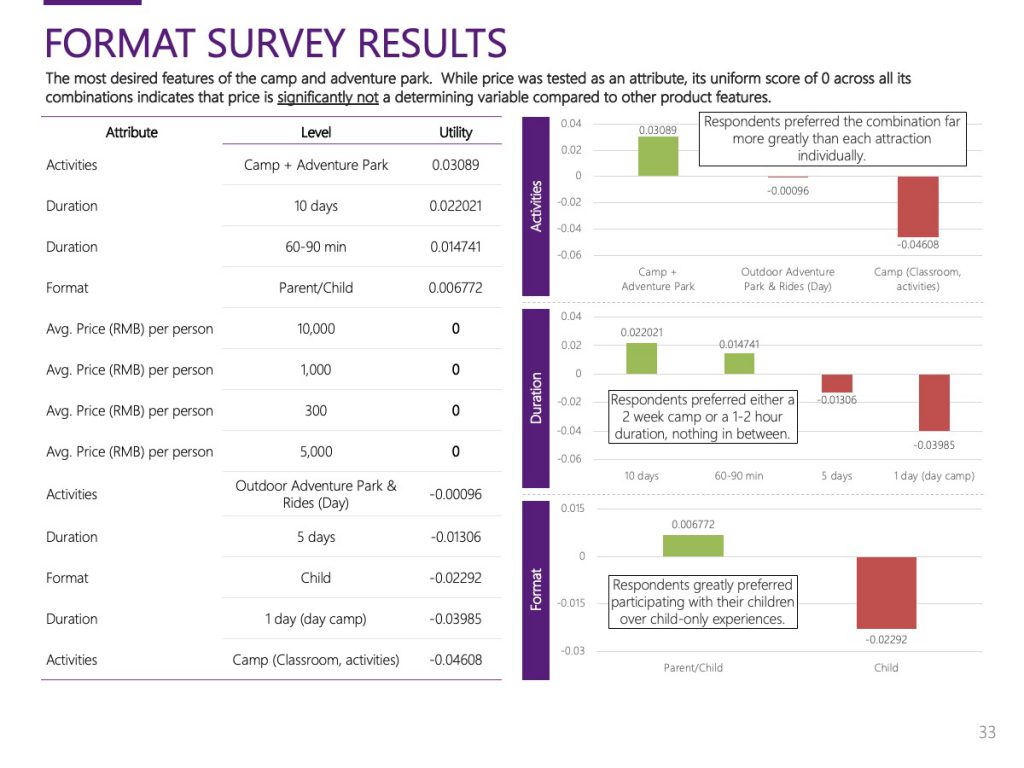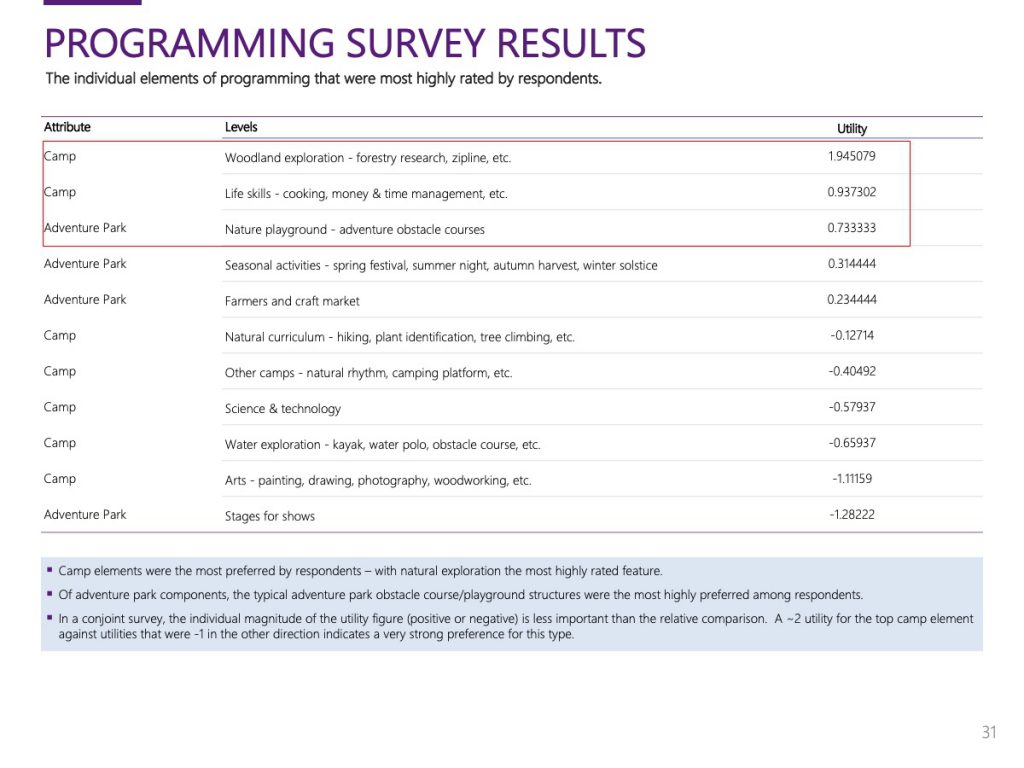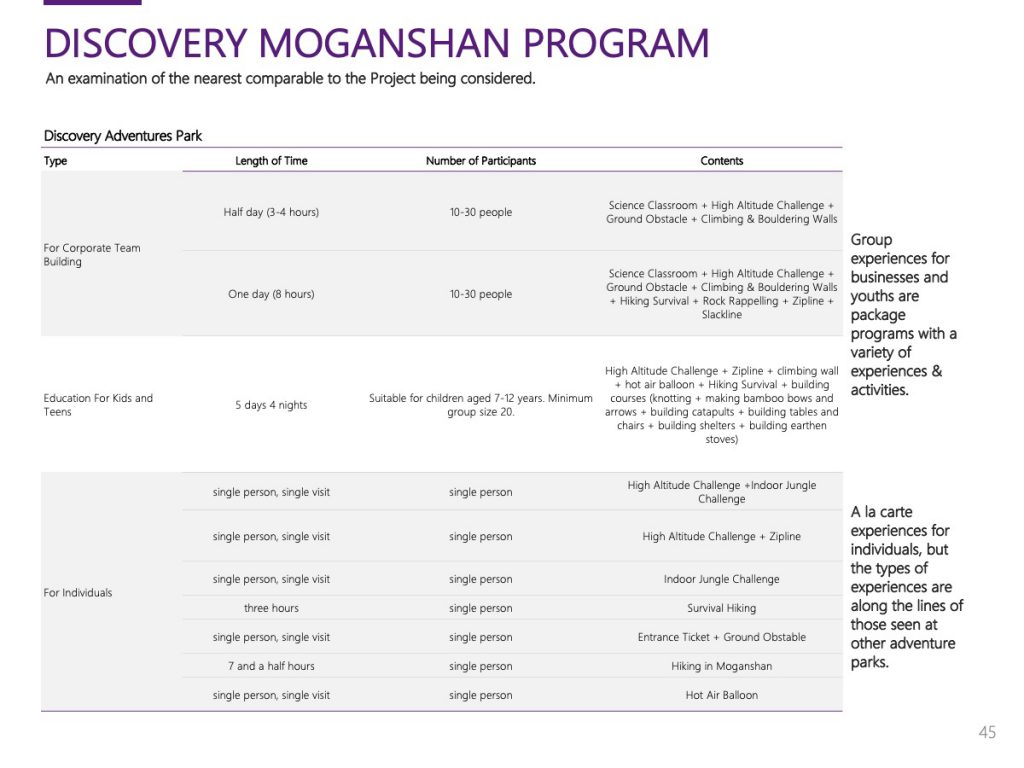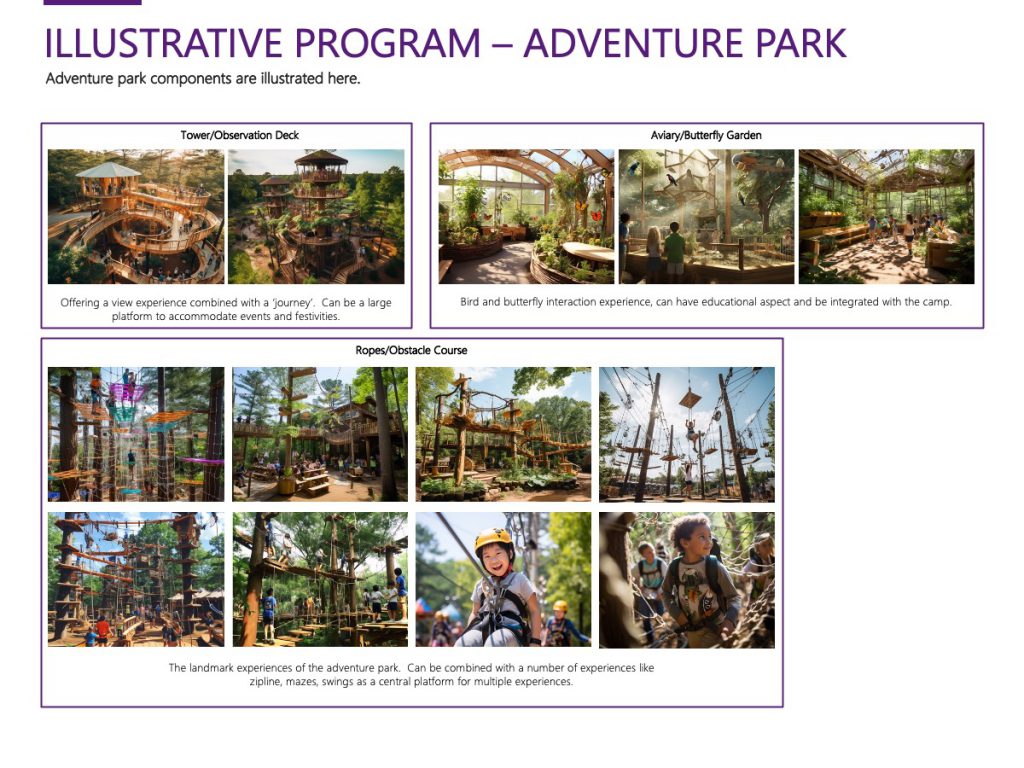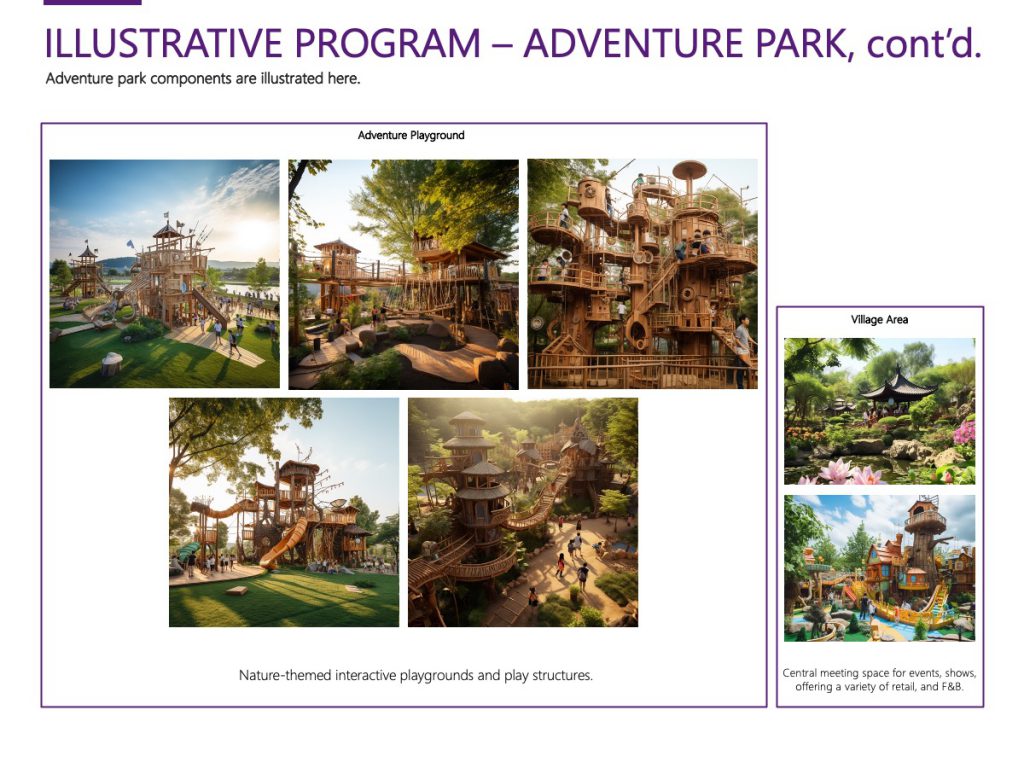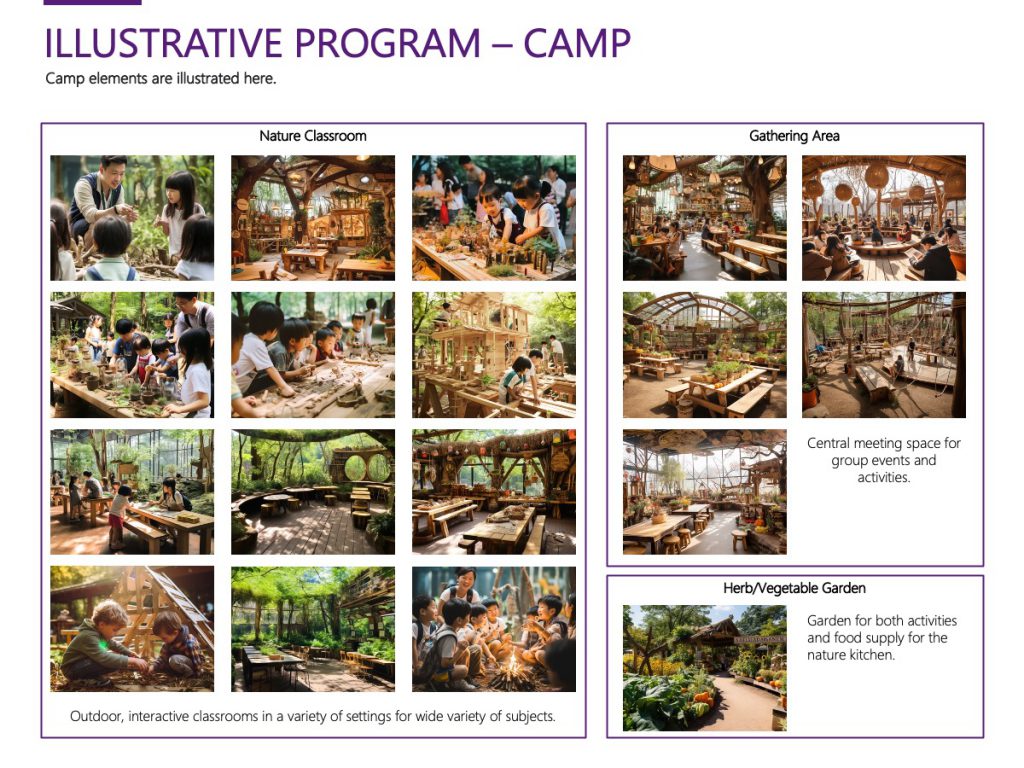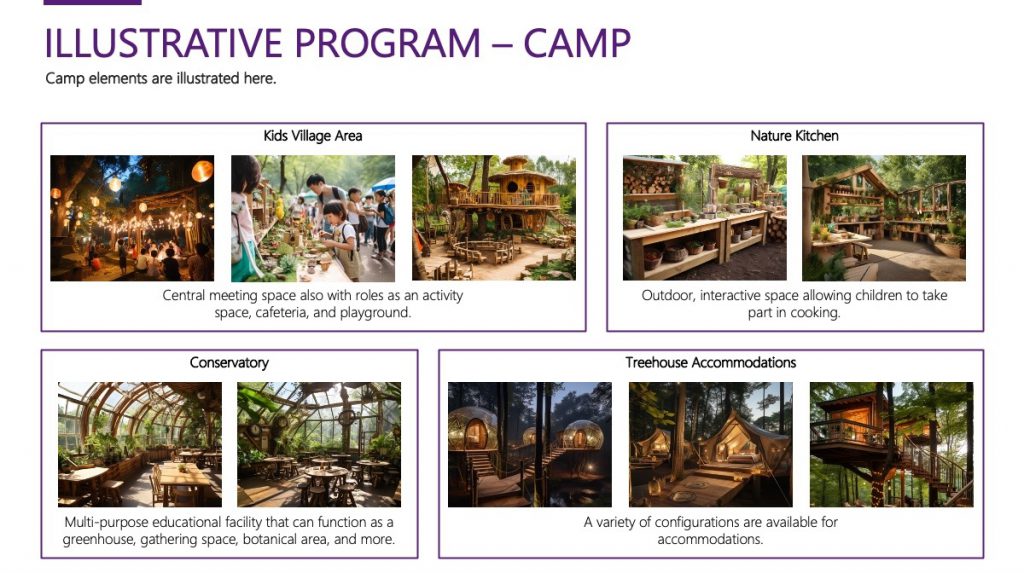Table of Contents
Toggle
Table of Contents
ToggleMandate:
Conceptualize and provide high level economics for a Discovery-branded adventure park and educational camp.
 Our client was a Jiangxi Province-based real estate developer who owned several hundred hectares of land along the banks of the Xinjiang River in Shangrao, in Jiangxi’s northeast.
Our client was a Jiangxi Province-based real estate developer who owned several hundred hectares of land along the banks of the Xinjiang River in Shangrao, in Jiangxi’s northeast.
Introduction
Adventure parks are mostly outdoor grounds designed to offer visitors a range of physically engaging activities. They typically feature attractions such as zip lines, rope courses, climbing walls, and obstacle courses, providing highly engaging, participatory experiences designed to challenge both the body and mind. Group visitation is important; schools and corporate groups on team-building exercises figure prominently among visitors at these parks. An adventure park’s “attractions” are highly engaging and intensive – a single course may take upwards of half an hour to complete, and the entire program can be measured in hours. These are structured, accompanied experiences and the cost of an admissions ticket is correspondingly several times higher than that of a typical amusement park.
At the time of the study, there were numerous adventure parks in China, as well as a Discovery-branded Discovery Adventures Moganshan situated in the Moganshan National Park, of Zhejiang Province. Discovery Moganshan operated as a typical adventure park, with a low-visitation, high-per capita spending (US$100+) operational model, and a focus on catering to large groups. Annual visitation was less than 100,000 visitors per year. However, most other adventure parks in China did not rely so heavily on group visits, and had an a la carte pricing model (US$10, $20, $30) for their various experiences.
Educational learning camps are well-established programs designed to combine recreational activities with educational experiences. With a wide range of possible subjects, from science, technology, nature, arts, and life skills, they provide children and teens a unique opportunity to learn outside a traditional classroom setting, in a hands-on, experiential learning environment. In the United States, camps were a $4 billion, 100-year old industry (as of 2021).
In China, such camps were a burgeoning industry. In a survey conducted in 2018, the camp industry had been growing at rates close to 20% for several years, and the majority of camps less than five years old. These camps were in the same model as their Western counterparts, catering to children and teens, with average teacher to camper ratios of 1:6, and programs ranging from day camps to week or two-week durations.
In discussions with the client, we were tasked to help conceptualize and quantify an attraction that would combine these two components at the Discovery Camp Shangrao. The camp needed to include both day and overnight programs tailored specifically for children, with entertaining and educational activities and experiences. The camp would need to be an all-ages, family destination with adventure park elements.
Market & Comparable Context
Often in China, doing a population analysis reveals numbers so large as to be meaningless. There were 2 million people living within an hour’s travel time from the site, and 18.8 million within three hours. But a more segmented view revealed some distinct segments that should be targeted by the attraction:
- Family adventurers – a demographic of families with young and school-age children. This accounted for 19% of the market.
- Corporate team-builders – adult age groups, higher education level, white collar professionals. This segmented account for slightly above 10% of the market.
- Weekend warrior-explorers – singles or couples aged 25-44, without children. This segment was 22% of the market.
- Retirees – older adults aged 55+. This was 24% of the market.
In terms of attractions, the market did not have any notable adventure parks. There were a few amusement (ride) parks in and around Shangrao, and some waterparks.
Camps, however, were a different story. There were a high number of summer and year-round camps that would be direct competitors to the Project. One notable characteristic of Chinese camps is the high representation of military barracks-style training. These military camps include “hardship” boot camps designed to foster self-sufficiency, character development, discipline, and independence in children. There were many of these, but the market also included typical science, nature, and craft camps. Moreover, pricing for the camps was lower than nationwide averages for the same type, although higher than for other amusement or adventure park types.
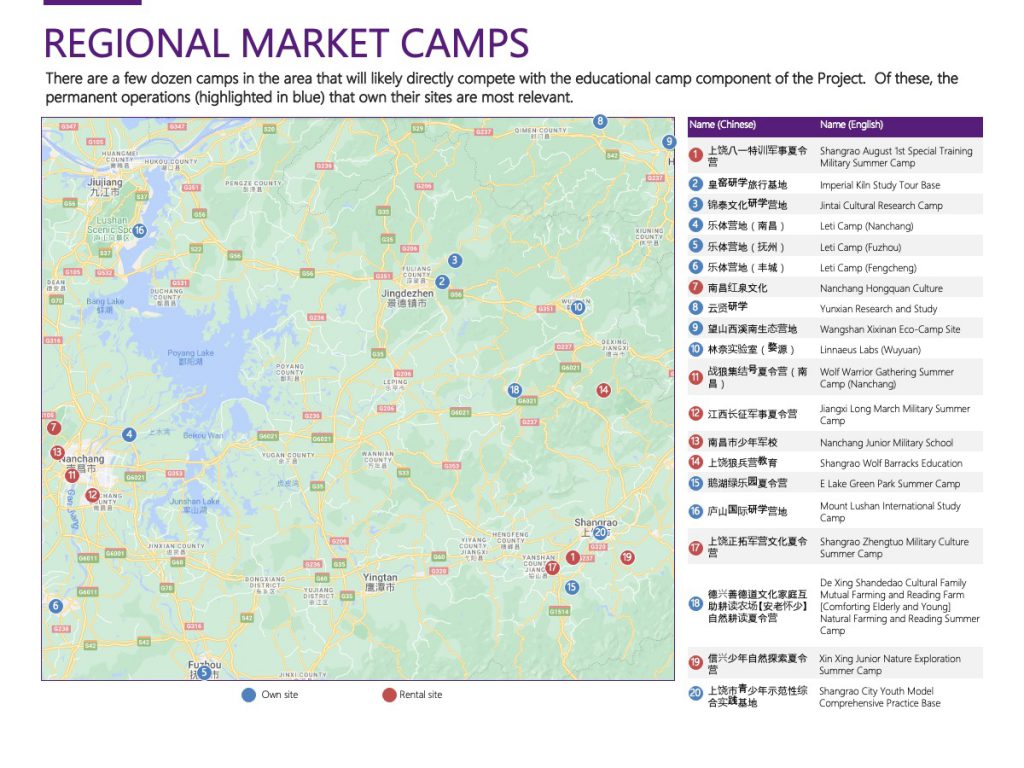
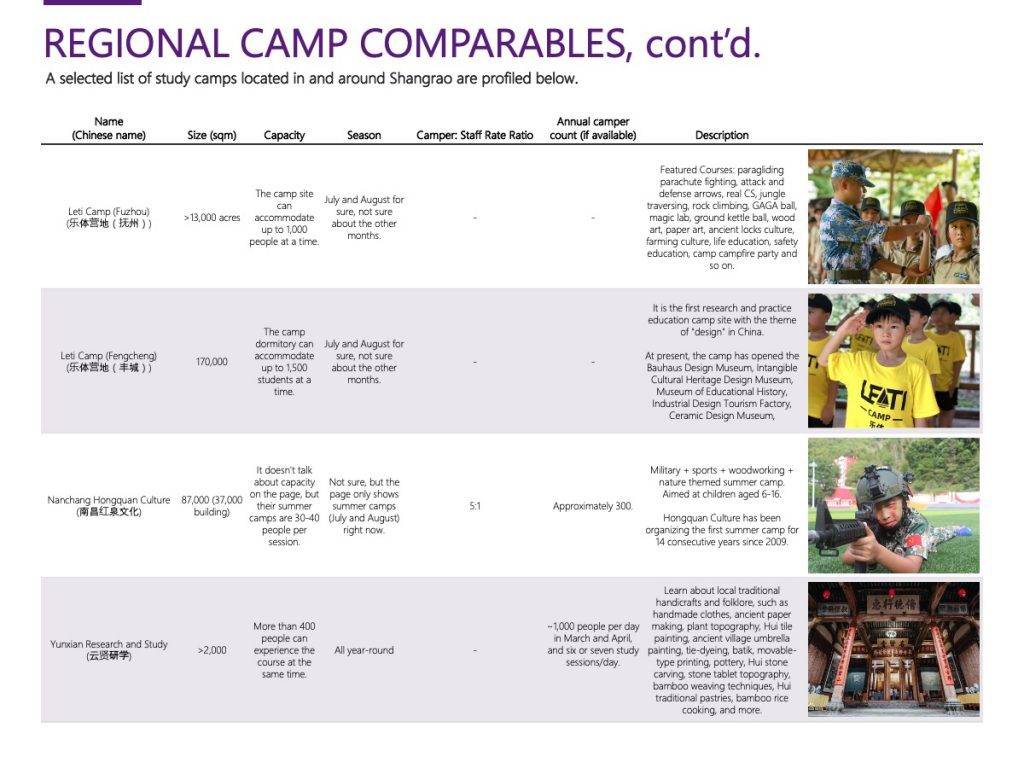 For a more in-depth understanding of potential guests, we ran three surveys on preferences for the program and operating model. These revealed the following:
For a more in-depth understanding of potential guests, we ran three surveys on preferences for the program and operating model. These revealed the following:
- The programming elements most highly rated by respondents included typical camp attributes like woodland exploration and life skills. Playground and obstacle course elements were rated most highly among adventure park elements.
- Respondents preferred the conceptual combination of camp and adventure park to a far greater degree than each element individually.
- Respondents preferred long or short durations, and nothing in between. I.e., they were far more likely to prefer either a 2-week camp or a 1-2 hour day camp.
- The program and curriculum of the attraction was far more important than scheduling or branding.
- Importantly, respondents favored parent-child experiences over child-only experiences.
Conceptualization
In order to conceptualize the hybrid Discovery Adventures Shangrao, we combined our knowledge of the market with benchmarks. For the adventure park, we tabulated the most commonly appearing elements in Chinese adventure parks. These were “altitude”-based challenges, such as zipline, ropes courses, ferrata, climbing, bungee-jumping, and towers. This was true at Discovery Adventures Moganshan as well.
As a preliminary concept, we recommended the following program.
Adventure Park
This would be the area that allowed access to the general public in the form of all-access day passes or a la carte experiences. It would cater to all ages, but be characterized by higher levels of thrill, adventure, and exploration than the camp area.
Tower/observation deck & tower/treehouse – the central landmark structure offering the ‘views’, and viewable from a distance. Experiences like zipline, swings, bridges, etc., can be launched or offered from this platform.
Ropes/obstacle course – the landmark experiences of the adventure park. Can be combined with a number of experiences like zipline, mazes, swings as a central platform for multiple experiences.
Aviary or butterfly garden – bird and butterfly interaction experience, can have educational aspect and be integrated with the camp.
Village – central meeting space for events, shows, offering a variety of retail, and F&B.
Adventure playground – nature-themed interactive playgrounds and play structures.
Camp
This would be the educational area of the attraction, catering mostly to younger children on overnight stays, or children and their parents in a day camp format. Visitors to this area are expected to have access to the adventure park.
Nature classroom(s) – outdoor, interactive classrooms in a variety of settings for wide variety of subjects.
Gathering area – central meeting space for group events and activities.
Nature kitchen – outdoor, interactive space allowing children to take part in cooking.
Herb/vegetable garden – garden for both activities and food supply for the nature kitchen.
Kids village – central meeting space also with roles as an activity space, cafeteria, and playground.
Treehouse camp – overnight accommodations provided for campers
Further Refinement
For more details, including illustrative financials, purchase the case study here.

